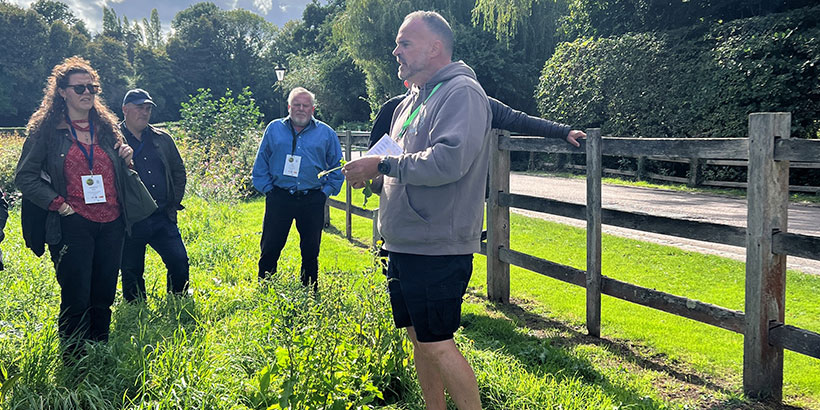A Foraging Adventure
This year’s UCFF included a foraging tour which I eagerly signed up for on arrival. The tour was hosted by Colin Wheeler-James of Ground Up Cookery School and took us around Tewinbury Farm in Hertfordshire. With so much to take in, you’ll excuse me if I have missed anything (Colin, if you are reading this I’m afraid my note taking was comprehensive, but my writing a little illegible, so some points may have been supplemented by a light Google – please forgive me). And of course, please don’t take the below as gospel, as some wild foods can be dangerous. Always check and if in doubt, don’t eat it!
Things I learnt foraging…
- Tewinbury Farm has a chalk stream where wild watercress grows. If there are sheep nearby, don’t eat it, as their droppings can mean you contract the liver fluke parasite (not nice).
- If there are no signs of livestock you can eat wild watercress, but it should be picked from above the waterline and washed thoroughly.
- Chalk streams are often home to invasive signal crayfish as well as non-native fish like zander, but you need a licence to trap crayfish so best to leave them be.
- If you follow a foraged diet it can be hard to get your carbs according to Eat Wild.
- Yew trees produce bright red berries with an edible outer flesh, but the stone inside is extremely poisonous.
- Shepherd’s purse: All parts of the plant are edible, but the younger leaves are best raw or cooked, with a spicy, cabbage-like flavour. The seeds can be used as a pepper substitute, and the plant has a history of use in herbal remedies.
- Ecotone is the term for where two habitats meet, such as a riverbank or woodland edge, and these areas can be rich for foraging.
- You can identify water mint by its square stem. It thrives in damp ground and makes a good ingredient for wild teas.
- Many thistles are edible if you peel off the spines to reach the stem.
- Nettles are a hugely overlooked plant, high in protein (12–20%), vitamins and iron. The top young leaves are best and should be cooked or blanched to remove the sting (although Colin did show us how to fold and roll them to eat raw – one for the brave!).
- Traditionally, nettle stings have been used as a folk remedy for ailments such as sciatica or hay fever.
- Nettle seeds can be harvested by shaking the brown seed heads into a bag. They are considered energising and give a natural lift.
- Nettles can be picked from February to December and grow back quickly after cutting.
- Wild carrot (Queen Anne’s Lace) can be distinguished from highly toxic poison hemlock by its hairy stem (hemlock has smooth stems, often with purple blotches). Wild carrot may have a single dark flower in the centre of its umbel, which hemlock lacks. Hemlock has an unpleasant odour when bruised, while crushed wild carrot smells faintly of carrot. Extreme caution is advised!
- Dock seeds are technically edible but have little flavour and are rarely used in cooking.
- Hawthorn berries are traditionally used to support heart health. They can be cooked into jams or even used as the base for a ketchup. They have a texture like avocado.
It was a fun and enlightening session and, apart from my ever-present concern as to whether a dog may have peed on my finds, I had a great time alongside my fellow UCFF attendees – many of whom were far more adventurous than me! To read more about the Universal Cookery and Food Festival click here.
- Lunch! Show & NRBPS 2025 - 29th September 2025
- AI in Foodservice - 23rd September 2025
- UCFF 2025 – A Breath of Fresh Air in Foodservice - 23rd September 2025

